Custom Back Surface Sclerals for Regular Cornea
Courtesy of Dr. Trevor J. Fosso, OD, FAAO, FSLS
INDICATIONS
Refractive correction.
Discomfort with multifocal soft contact lenses due to moderate dry eye syndrome.
Discomfort with multifocal soft contact lenses due to moderate dry eye syndrome.
HISTORY
| This 56-year-old female patient presented for a scleral lens fitting with a history of refractive error and moderate dry eye syndrome. She is a soft multifocal contact lens wearer who was not achieving her desired level of acuity. In addition, her moderate dry eye syndrome impacts her ability to wear contact lenses and greatly impacts her visual quality and stability. | Patient’s Uncorrected VA (distance and near) is: DVA: OD: 20/400, OS: 20/400, OU: 20/200 NVA: OD: 20/20, OS: 20/20, OU: 20/20 |
PROCEDURES
Patient’s ocular shape was evaluated using the Pentacam CSP saggital height map. Figure 1 shows CSP reports for both eyes. There is an apparent moderate scleral toricity OU, indicating that the patient is likely to benefit from a toric or a freeform scleral lens design.
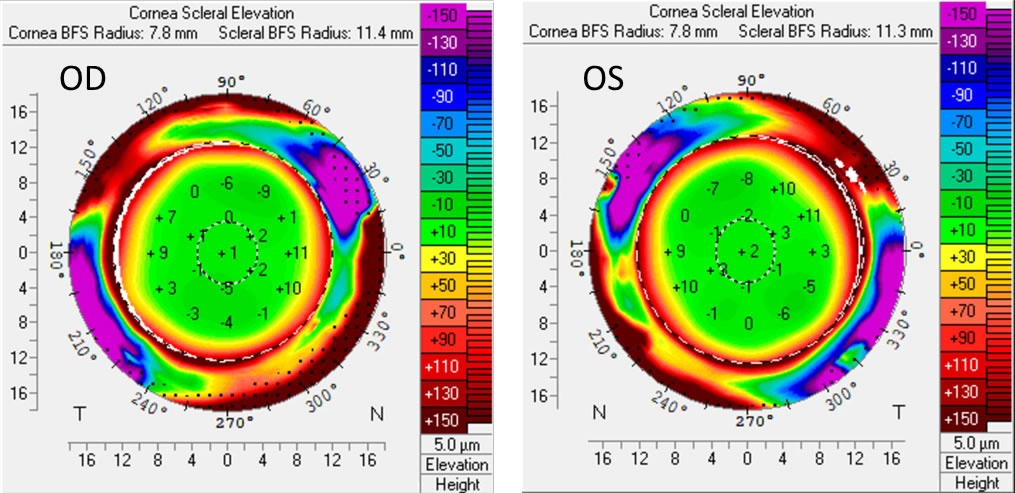
FIGURE 1.
The initial lens power was determined by over-refracting the patient with a 7.85-mm BC Valley Contax Custom Stable Elite scleral lens.
LENS SELECTION AND DESIGN
The patient was fitted with a GaudiTM scleral lens. Since the patient’s HVID was 12.5-mm OU we opted for a 16.8-mm diameter lenses with a moderate fit factor to gently match the contours of the lens to the shape of the eye.
Figure 2 shows the predicted clearance maps calculated using the Gaudi lens design software and the radial saggital profiles (red line) compared to the CSP measurement (black line) at the 7.65-mm radius.
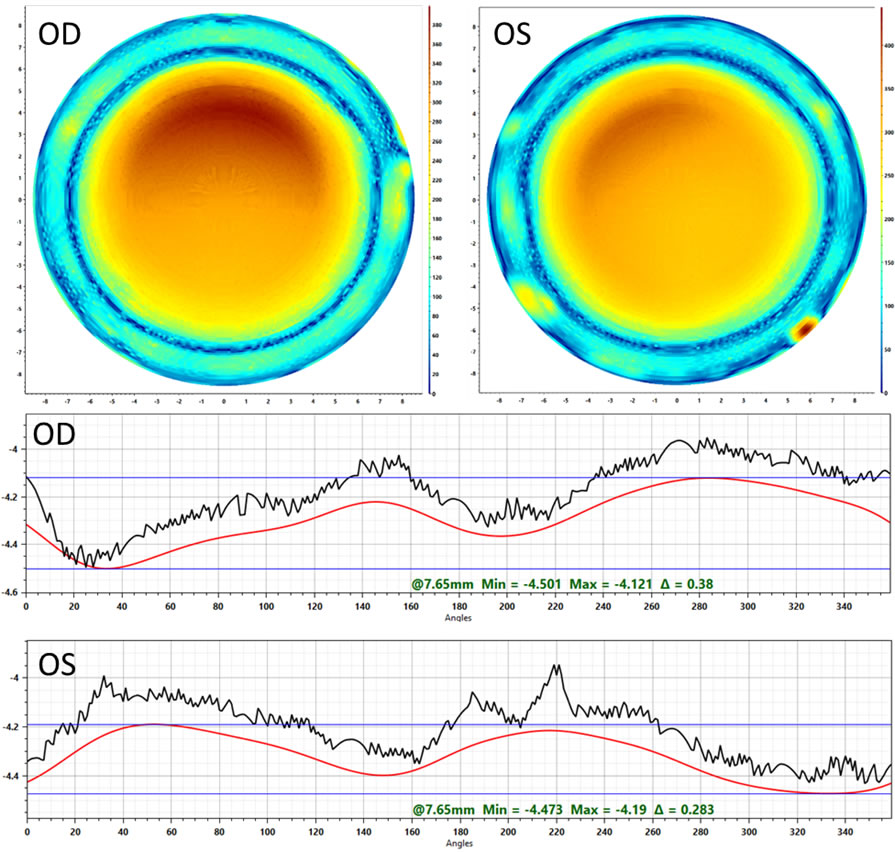
FIGURE 2.
OUTCOME
First lens set based on CSP data. No remakes.
DVA: OD: 20/20-1, OS: 20/20, OU: 20/20
NVA: OU: 20/25+
DVA: OD: 20/20-1, OS: 20/20, OU: 20/20
NVA: OU: 20/25+
Excellent lens comfort and vision throughout 8+ hours of wear. Patient reports vision, distance and near, is better quality and stability than her current daily disposable multifocal lenses.
FIT EVALUATION
Central clearance was measured using an AS OCT. The reported values were 356-µm OD and 327-µm OS (Figure 3), which after correcting for the refractive index of the tear film give: 270-µm OD and 245-µm OS.
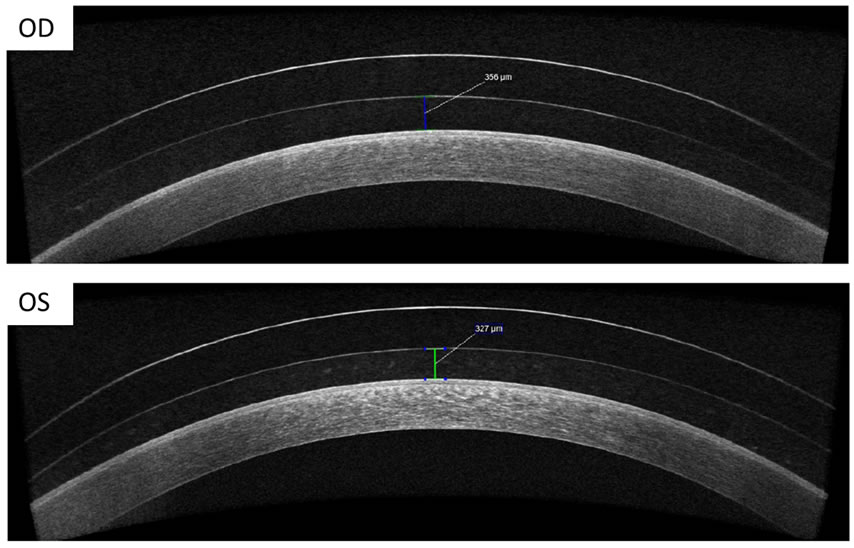
FIGURE 3.
Figure 4 shows the Gaudi lens landing zone and edge profile. Figure 5 shows great lens alignment and no impingement.
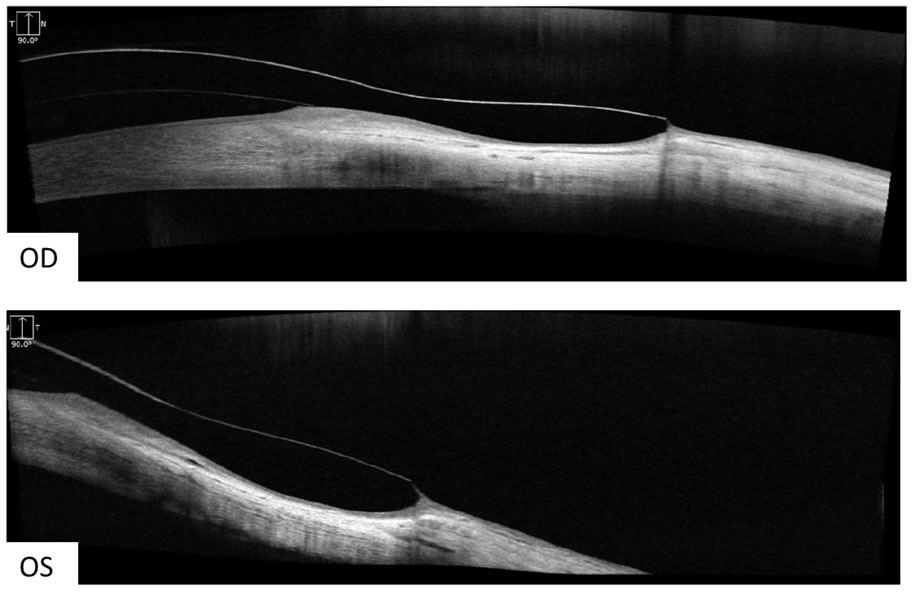
FIGURE 4.
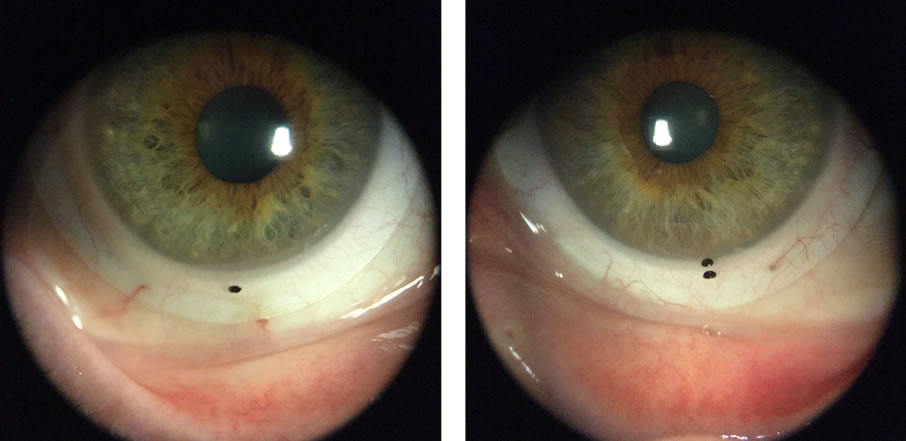
FIGURE 5.
SUMMARY
The patient achieved improved comfort with lens wear and has been able to wear her lenses more throughout the day compared to her daily disposable lenses. She is much happier with her vision and there has been immense improvement to her visual quality and stability.
The fitting process was significantly simplified with the use of the Pentacam CSP module and Gaudi Scleral lens design software. Excellent comfort and VA were achieved with the first lens without remakes.
